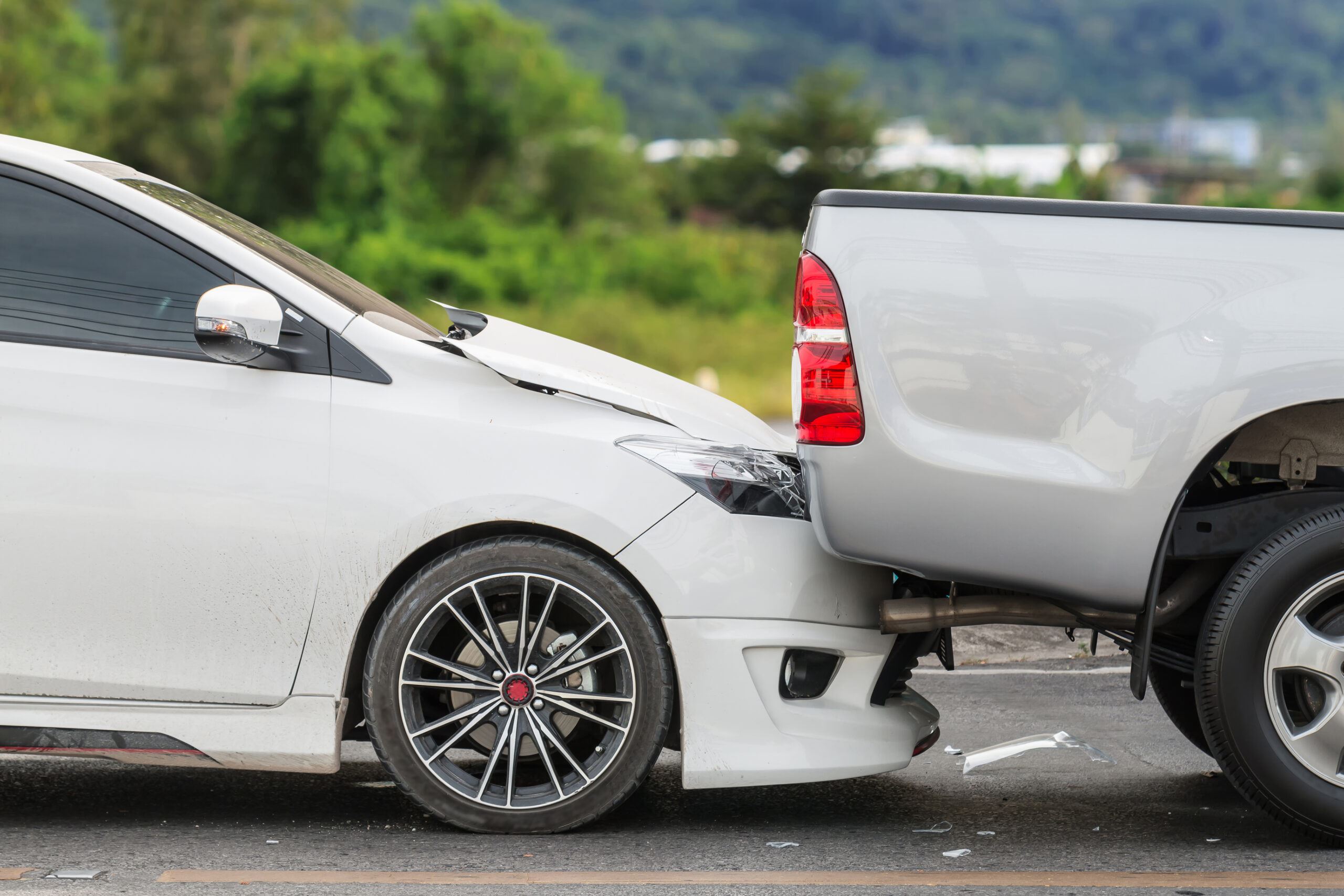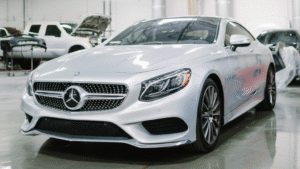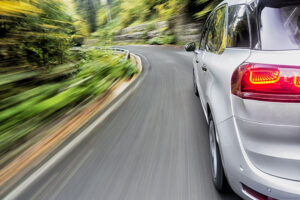Front-end collisions are among the most common types of car accidents on Los Angeles roads, from minor fender-benders in traffic to more serious impacts at intersections. Even if your car looks okay from the outside, front-end collisions can cause hidden damage that affects your vehicle’s safety, performance, and value.
As professional auto body repair experts, we’ve seen everything from slightly bent bumpers to severe structural and engine damage caused by what drivers thought was a “minor hit.” In this guide, we’ll break down the types of damage your car can suffer in a front-end collision, and why it’s so important to get a professional inspection after any accident.
Table of Contents:
- Understanding Front-End Collisions
- Common Types of Damage in a Front-End Collision
- Hidden Damage You Might Not See
- Why Professional Inspection Matters After a Front-End Collision
- How to Handle Repairs After a Front-End Collision
- Schedule a Front-End Collision Repair Inspection Today
Understanding Front-End Collisions
When your car experiences a front-end collision, the front structure absorbs most of the impact. Modern vehicles are designed with crumple zones; areas engineered to deform in a way that protects passengers. While this safety feature saves lives, it often means that even low-speed accidents can cause internal damage that isn’t visible from the outside.
The type and extent of damage depend on:
- The speed of the collision
- The size and type of the vehicles involved
- The exact point of impact (center, corner, offset)
A collision at just 15 mph can misalign the frame, damage your bumper, or throw your suspension out of balance. That’s why even small accidents should be taken seriously.
Common Types of Damage in a Front-End Collision
1. Bumper Damage
Your bumper is the first line of defense during a front-end impact. It’s designed to absorb shock and minimize damage to other parts of the car. However, modern bumpers often house sensors for parking assistance, adaptive cruise control, and collision avoidance.
Common issues include:
- Cracks, dents, or scratches in the bumper cover
- Misaligned or loose bumper mounts
- Damaged sensors or wiring behind the bumper
Even if it looks fine, a cracked or bent bumper could compromise your vehicle’s ability to absorb impact in another accident.
2. Hood and Fender Damage
The hood often takes a lot of force in a collision. It might bend, crumple, or buckle upward, making it difficult to open or close properly. Fenders, meanwhile, can warp or misalign, affecting how your doors and headlights fit.
Watch for:
- Uneven gaps between panels
- Scratched or chipped paint around the edges
- Doors that don’t open or close smoothly
Proper alignment ensures your vehicle remains aerodynamic and safe.
3. Frame and Structural Damage
This is one of the most serious types of collision damage. Your car’s frame forms the foundation for everything else. If it’s bent or twisted, it can throw off alignment, steering, and even how your car handles in future accidents.
Signs of frame damage include:
- Vehicle pulling to one side while driving
- Uneven gaps between doors or panels
- Vibration or instability at higher speeds
At a certified auto body shop like Network Auto Body, technicians use computerized frame measuring systems to determine if the structure is out of alignment. If so, frame straightening machines are used to restore it to manufacturer specifications.
4. Engine and Radiator Damage
Even a mild front-end impact can push the radiator, cooling fan, or condenser backward into the engine compartment. If you notice fluid leaks, overheating, or strange noises after a collision, your engine or cooling system could be affected.
Possible issues:
- Damaged radiator or condenser
- Misaligned engine mounts
- Leaking coolant or transmission fluid
- Cracked belts or pulleys
Engine-related damage can worsen quickly if ignored, so it’s important to have these components inspected immediately after the accident.
5. Suspension and Wheel Alignment
Your car’s suspension system absorbs road bumps and keeps your ride smooth, but a front-end impact can throw everything out of balance. Even if you don’t feel it right away, misalignment or damaged suspension parts can cause long-term problems.
Signs of suspension damage:
- Vehicle pulling to one side
- Uneven tire wear
- Steering wheel off-center
- Clunking or creaking sounds over bumps
A professional wheel alignment and suspension inspection ensure safe handling and extend the life of your tires.
6. Airbag and Safety System Damage
If your airbags deployed during the collision, they’ll need to be replaced before the car can be safely driven again. But even if they didn’t, the sensors that control your airbags and seatbelts may have been affected.
Things to check:
- Airbag warning light on the dashboard
- Seatbelt pre-tensioners functioning properly
- Advanced driver-assistance systems (ADAS) recalibrated
Our certified technicians use diagnostic tools to reset and test all safety systems after repairs.
7. Electrical and Lighting Issues
Modern cars have complex electrical systems that control everything from headlights to driver-assist features. A front-end collision can disrupt wiring harnesses or damage control modules hidden behind the bumper or grille.
Check for:
- Headlights or fog lights not working
- Flickering dashboard lights
- Malfunctioning sensors or warning alerts
Electrical repairs should always be handled by trained professionals to avoid further damage.
8. Paint and Cosmetic Damage
Even small front-end collisions can leave visible reminders, including scratches, chips, and scuffs that expose the metal beneath. If left untreated, these spots can rust and spread, leading to more expensive repairs later.
A professional paint repair includes:
- Sanding and prepping the area
- Applying primer, color-matched paint, and clear coat
- Blending and polishing for a seamless finish
If your car needs repainting, always choose a body shop that uses OEM-approved paint for the best color match and long-lasting protection.
Hidden Damage You Might Not See
Not all damage is obvious. Beneath the surface, internal components like mounts, radiators, and sensors can be misaligned or cracked. These issues often show up later as handling problems, fluid leaks, or warning lights.
That’s why a post-collision diagnostic scan is so important. Our technicians use advanced equipment to identify hidden damage that visual inspections can’t detect.
Why Professional Inspection Matters After a Front-End Collision
Even if your car looks fine after a front-end hit, it’s best to get a full inspection by a certified auto body shop. Here’s why:
- Safety: Ensures airbags, sensors, and seatbelts function properly.
- Performance: Keeps your car driving straight, smooth, and quiet.
- Value: Proper repairs preserve your vehicle’s resale and trade-in value.
Our certified shop follows manufacturer repair guidelines and uses OEM parts, ensuring your car is restored to factory condition.
How to Handle Repairs After a Front-End Collision
Step 1: Get a Professional Estimate
Start by visiting a trusted auto body shop for a detailed repair estimate. Most reputable shops in Los Angeles offer free estimates that include both visible and hidden damage assessments.
Step 2: Work With Your Insurance Company
File your claim as soon as possible. A good body shop will help you handle the insurance paperwork and communicate directly with your adjuster.
Step 3: Choose a Certified Repair Facility
Look for certifications like:
- I-CAR Gold Class
- ASE Certification
- OEM-specific certifications (Toyota, Honda, etc.)
These designations mean the shop meets strict standards for training, equipment, and repair quality.
Schedule a Front-End Collision Repair Inspection Today
Even a “small” accident can cause major hidden issues, so don’t take chances with your safety. If you’ve recently been in a front-end collision, bring your vehicle to our certified auto body repair shop for a professional inspection and free estimate.
We’ll assess every component, repair damage to factory standards, and get you back on the road safely and confidently.




